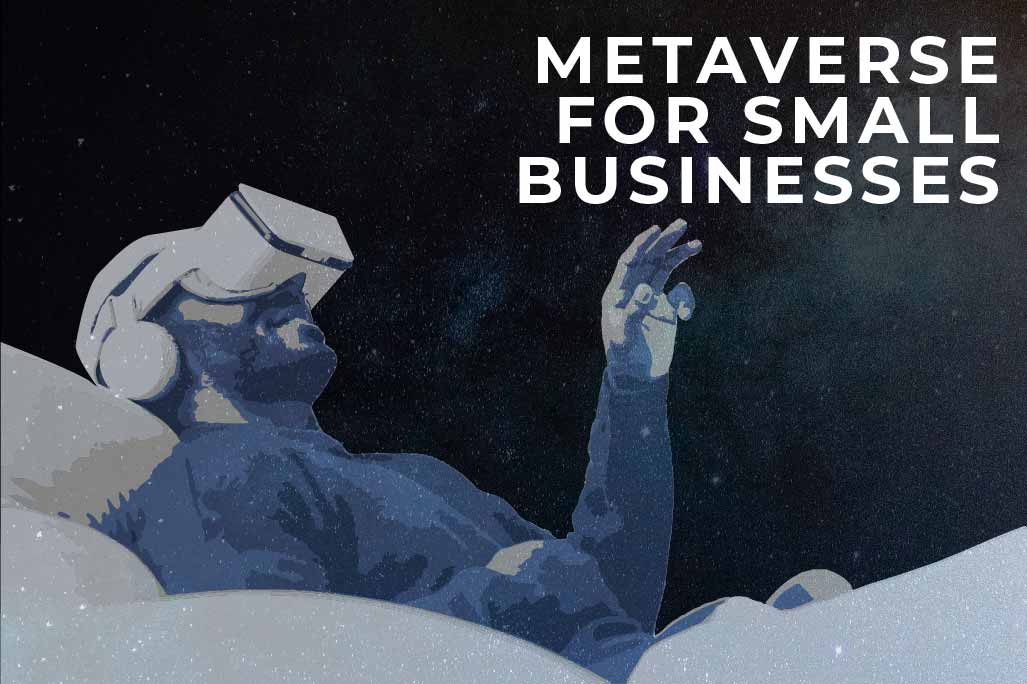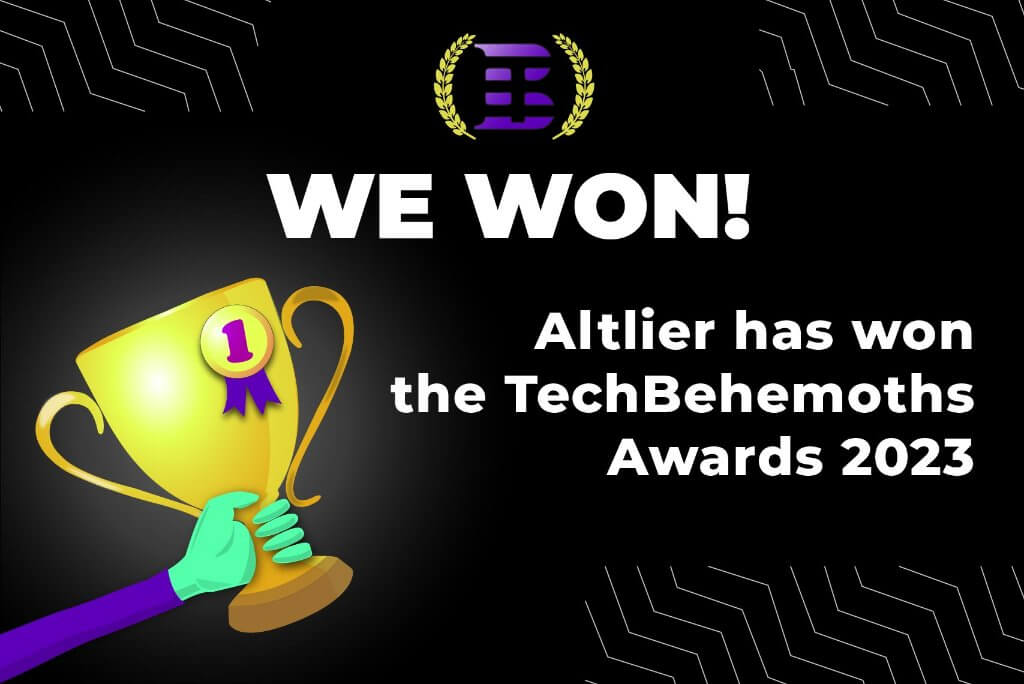As one age fades into the dusk, another age dawns. Stunning innovations in chip manufacturing, AI and machine learning have reached a pivotal stage of development. The influence of these conceptions on human societies is already evident. Work, leisure, travel and trade function largely across online systems. The metaverse seeks to recontextualise the world we live in, optimising it to meet the needs of an increasingly technophilic species. Small business owners, daunted by the speed of change — or simply bewildered by it — should see this moment as an opportunity to embrace new ways of growing their brand. Getting ahead of consumer trends is where the metaverse yields its rewards.
What Is the Metaverse?
Nobody is entirely sure what the metaverse is. It is too new to define and somewhat incomplete. At its core, the metaverse owes its conception to the “sandbox” video games of the 1980s and 1990s. Not unlike the Grand Theft Auto franchise, the metaverse casts the user/player as the central protagonist of a 360-degree “sandbox” simulation. The simulation is achieved by merging two technologies: virtual reality (VR) and augmented reality (AR).
Virtual Reality
Virtual reality takes over the user/player’s entire visual field and replaces the environment with another. The headset is designed to block out the normal range and depth of vision, including peripheral, and fill it with elements of the new environment. Whichever direction the player looks, the virtual environment corresponds precisely to the physics expected of a real environment. Proportion and scale are maintained and unbroken, regardless of where the user/player wanders.
Augmented Reality
Augmented reality does not replace what is seen but rather adds an overlay to it. Gamers familiar with Pokémon GO will be accustomed to hunting the strange, virtual creatures in their own homes and gardens via phones and tablet screens. The overlay is designed to integrate with the existing environment and function within the physics of that context. This allows free movement while projecting images in accordance with wherever the player happens to be.
Tables, chairs, vehicles and buildings feel alive and tangible. In the metaverse, “you” — or the third-person representation of “you” (the user’s avatar) — navigates the world, interacting with objects, places and “people”.
Metaverse Use Cases
But why should business owners be excited by what appears to be a fleeting technological novelty? The answer lies in the intersection between our real world and the simulated one. The metaverse aims to mirror the real world’s labyrinthine infrastructures and mechanisms; it has communities, municipalities, institutions, places of leisure and work, and, most importantly, a marketplace that facilitates trade and commerce.
Early adopters of the metaverse’s features have purchased virtual land and set up virtual stores and showrooms on the virtual high street. Via the VR headset, potential customers engage the marketplace vicariously through their avatar, browsing storefront windows, engaging with virtual assistants, activating demonstration modes or downloading supplementary marketing materials to take away and review before committing to a purchase.
Businesses can also hold virtual events, product launches and conferences by simply inviting clients/avatars in the same way an organisation does on social media platforms.
Sceptical business owners should consider the following two cases:
AMD and Fortnite
Computer hardware giants AMD teamed up with Epic Games, developers of the smash hit online zombie shooter, “Fortnite”. Together they built maps exclusive to the metaverse, where up to 100 virtual players would battle the zombie hordes on the Fortnite Creative Island, ingeniously modelled on the design of AMD’s very own graphics cards.
What made this pairing so successful was that AMD’s high-performance hardware perfectly met Fortnite’s demand for high-performance graphics processing. Both brands benefited enormously from this innovative collaboration.
Gucci and ZEPETO
Luxury clothing brand Gucci teamed up with ZEPETO, a metaverse game and social media platform, to create a series of “virtual wearables”.
This collaboration allowed ZEPETO players to do what Grand Theft Auto players had been doing for years — they could customise their characters by purchasing clothing and accessories from Gucci’s virtual itinerary. Players could now express their individuality by dressing their avatars however they liked and could even visit the Gucci Villa located in another part of the metaverse.
The success of this venture saw Coca-Cola jumping into the metaverse by minting a series of non-fungible tokens (NFTs) that would unlock Coca-Cola-themed wearables on the Decentraland metaverse environment.
Key Metaverse Opportunities for Small Businesses
Branding and Marketing
One of the most common and effective forms of metaverse marketing is the minting of NFTs. A small business should seek a strong, consistent and immediate visual presence and a distinctive brand. A logo on a set of collectable NFTs hidden around the virtual store builds engagement and intrigue. Incentives can be developed by tying each NFT to something that will benefit the client. Brands rise or fall based on the strength of their public identity — and the brand logo is likely the first point of contact for the roving eye of the prospective client. The sustained ubiquity of McDonald’s golden arches logo shows how deeply a brand can embed itself in the cultural zeitgeist. Branded NFTs are practically essential.
Modern societies are accustomed to giant billboard posters plastered on walls and bridges and overhead banners displayed in the interiors of train and subway compartments. This approach applies even more so in the metaverse. Customised billboards and posters can attract avatars as they gather in the market square, and virtual concerts or ball games can project adverts and animations around the stalls. A branded advert that piques an avatar’s interest may generate a series of supplementary adverts that expand on the product’s theme or function or simply suggest another item in the brand’s product range.
Ultimately, the nature of the product or service will determine the type of marketing strategy employed. Ball game billboards may work wonders for a soft drinks company but not so much for a biopsy clinic.
Raising Brand Awareness and Finding New Customers
In the metaverse, small business owners can find new customers and maintain relationships with existing ones in a much more streamlined way. Innovations in personalised communication can turn a conventional human exchange between merchant and client into an absorbing virtual meta-narrative. A client’s needs can be satisfied by offering a suite of tailored services based on their historical purchases or enquiries. As the client’s narrative builds, so does their loyalty to the brand and the merchant’s understanding of the client’s needs.
Below are five key trends you can utilise to find new customers:
- Broadcasting: Host large live events, publish public polls and invite avatars to actively participate rather than spectate. This drives interest and commitment and bolsters the brand’s identity.
- Engaging: Create interactive virtual experiences that demonstrate what the brand stands for, how it functions, and what value it gives. Create communities of avatars drawn to the brand’s message. Target younger avatars and indulge their curiosity.
- Informing: Integrate supplementary brand information into virtual games and puzzles. Educate avatars about the brand’s ethos, function and benefits via “gamified” means. Incentivise them to complete tasks to unlock additional facts and figures.
- Advocating: Engage and reward committed avatars with first-in-line offers and exclusives. Develop a system that rewards avatars advocating the brand to other avatars.
- Selling: Find unique selling methods. Gamify a limited sale by limiting its availability, mint a series of collectable NFTs and hold a virtual auction.
As this grand project unravels, the very nature of what a business sells may radically change. Some products or services may prove to be optimal in virtual form. True, a client cannot get a “real” haircut in the metaverse (an avatar can), but an incentive structure in the form of NFTs earned by a client for simply enquiring at the Meta-barbershop can be a very effective solution. Tokens can be redeemed at the actual barbershop, where the client can receive some sort of reward or discount. Turn looking for new customers into a creative act. The metaverse demands that business owners act boldly and audaciously.
Monetising Intellectual Property
Corporations and small businesses alike are prone to the same risks on the metaverse as they would be in any competitive market. Valuable assets such as unique design features, musical jingles and source code all run the risk of being stolen, sabotaged or discredited by bad actors. Filing trademarks, patents and copyrights immediately with the relevant authorities will grant legal rights to the merchant’s IP and provide protection against competitors.
It is common practice in the metaverse to acquire a licence for IP rights by minting an NFT corresponding to that licence. Protecting and owning a strong IP will attract a lot of propositions from rival IPs. Licencing and monetising an IP will generate fantastic returns whilst maintaining the protections the business enjoys.
There are snags, though. The legalities of digital assets, like the metaverse itself, are sometimes hard to police. Software infringement, for example, necessitates accessing and comparing source code, which is expensive, time-consuming and bound up in legal protocols. Also, the alleged bad actor could change the offending code any time before the case is seen before the court. However, legal policies will undoubtedly evolve in tandem with the metaverse’s constant march toward full fruition.
Six Practical Tips on How To Get Started in the Metaverse
The metaverse is a rapidly expanding realm of opportunities for small businesses. But with so many options and new technological advancements, it can be difficult to know where to start. Here are six practical tips to help you get started in the metaverse.
1. Decide what you want to offer
The first step is to decide what product or service you want to offer in the metaverse. What are you passionate about? What skills do you have to offer? What need does your business fill? Once you have a clear idea of your business’s purpose, you can start planning your metaverse strategy.
2. Research the competition
It’s essential to research your competition. Who are they? What do they offer? What are their strengths and weaknesses? Knowing your competition will help you determine your unique selling proposition and find ways to stand out from the crowd.
3. Create an avatar
In the metaverse, your avatar represents you. It’s important to spend some time creating an avatar that accurately reflects your personal style and brand identity. Your avatar should be recognisable and memorable.
4. Build a virtual space
Once you have an avatar, it’s time to build your virtual space. This is where potential customers will visit when they want to learn more about your business or make a purchase. When designing your space, keep in mind both functionality and aesthetic appeal. You want potential customers to feel welcome and comfortable while also being able to navigate and find what they’re looking for easily.
5. Drive traffic to your space
Like in the real world, location is key in the metaverse. Make sure customers can easily find your space by promoting it through social media, online directories and other channels. You can also drive traffic by participating in virtual events or setting up special offers and promotions.
6. Keep growing
The key to success in the metaverse is constant growth and evolution. As new technologies emerge, new opportunities will open up for small businesses in the metaverse. To stay ahead of the curve, keep experimenting and innovating.
Conclusion
For a concept that promises so much, many feel the metaverse is too young and too brittle to invest in. On-the-fence entrepreneurs may be spooked by the recent plunge in Meta stock or put off by the 10+ years of development anticipated before the metaverse reaches full maturation. It requires patience, a keen sense for the future, a knack for anticipating emergent trends, and rethinking how consumers choose what they consume. It also requires a leap of faith.
The metaverse is evolving in tandem with two generations of people reared on smart devices and instant gratification. It is likely that if the metaverse did not exist, people would eventually will it into existence themselves.
Altlier is a full-service digital marketing and web design agency. Our digital marketing consultant designs innovative and effective marketing strategies in the virtual space and offers full guidance on NFT marketing, and our multimedia creators develop graphic and video content for businesses’ NFTs. If you are interested in discussing opportunities for marketing your business in the metaverse, check out our services or get in touch.




